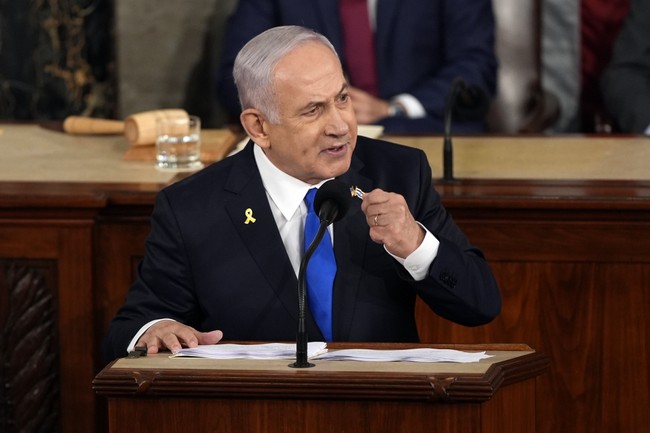We support our Publishers and Content Creators. You can view this story on their website by CLICKING HERE.

Bluff? Perhaps, but it would move the bluff count in this phase of Israel’s war against Iranian proxies from zero to one.
For the last several days, Israel has demanded a withdrawal by Hezbollah from southern Lebanon in compliance with UN Security Council resolutions as well as an end to missile attacks. Benjamin Netanyahu and Yoav Gallant have repeatedly warned that they would ramp up to a full-scale war to secure their north from any further attacks, and the Israeli cabinet granted them carte blanche to achieve that outcome.
Advertisement
Today, Israel took the first step toward a ground war across their northern border:
Following a situation assessment, the IDF announced on Wednesday that it is remobilizing two reserve brigades for operations in the North.
The IDF said that recruiting additional reserve brigades would allow the fight against Hezbollah to continue.
The IDF also said that the operations would create conditions for the safe return of the north’s residents to their homes in accordance with the newly adopted war goal.
That doesn’t mean that the IDF will achieve readiness for ground action immediately. Netanyahu is traveling to the US tonight to speak at the UN, so nothing would take place until he gets back. However, Netanyahu has called a security cabinet meeting before he leaves for New York, a move which indicates some need for strategic and tactical decisions.
The signals for a massive escalation are all there. Residents of southern Lebanon have already figured that much out for themselves, of course. They spent the last couple of days attempting to flee into Beirut, and Netanyahu encouraged them to get at least a thousand yards away from any Hezbollah weapons stores or command locations.
And today, the IDF may have blinded Hezbollah even further after disabling thousands of commanders over the last few days. In airstrikes this morning, Israel answered Hezbollah’s ballistic targeting of Mossad HQ by striking dozens of their own intel locations all across Lebanon:
Advertisement
The IDF on Wednesday announced that it had bombed Hezbollah’s intelligence headquarters network in 60 different spots.
According to the IDF, this will immediately and directly impact Hezbollah’s ability to collect intelligence, coordinate intelligence efforts, and its various tools for evaluating the broader battlefield picture.
A map of those areas attacked showed a huge number of targets in southern Lebanon, a few deep into the Bekaa Valley, a few in central Lebanon, and one on the western coast.
All of this took place nearly simultaneously, preventing any possible shift of resources once the strike began. If the IDF did succeed in striking Hezbollah’s intel nodes, that speaks volumes about their own intelligence on Hezbollah’s operations. Once again, it calls into question whether Hassan Nasrallah’s pager strategy gave Israel an opening for more than just a simultaneous explosion and decimation of their command-and-control operations. Their operations in Lebanon have appeared precise, strategic, and very well informed.
Would their ground invasion demonstrate the same capabilities? They would at least have a pretty good idea where to send their troops to excise Hezbollah’s dug-in assets, and at this point a lot fewer civilians in the way than they did in Gaza. But make no mistake: Hezbollah in Lebanon will be more difficult than Hamas in Gaza, and the latter took months for the IDF to pacify to its current level — and it still remains dangerous.
Advertisement
One key difference between them is the command structure. Hamas dictated the start of the war on October 7, protected its command assets effectively at the start, and didn’t see any real degradation in command and control until a few months into the war. Hassan Nasrallah gave Israel the means to decimate their structure, and now it appears all of his closest deputies have reached room temperature:
Looks pretty lonely at the top… pic.twitter.com/ZB3uTQEs0b
— Katie Pavlich (@KatiePavlich) September 25, 2024
The majority of these met their fate in one blast in Beirut, when the IDF targeted Ibrahim Aqil at a meeting of Hezbollah’s commanders after Pagercide. That alone demonstrates the power of that operation, which forced Hezbollah into risky in-person meetings that are prone to security leaks. The last couple of these commanders have been eliminated in the last 24 hours, which again indicates how far Israel is still penetrating into their command and communications.
This operation against Hezbollah’s intel nodes has another strategic parallel to Grim Beeper, too. You don’t pull the trigger on this unless you plan to take immediate advantage of the chaos, confusion, and intel blinding it creates. Mobilizing two reserve units is no coincidence, and it’s likely no bluff either. The Israelis are deadly serious about restoring both their deterrent capacity and their security in the north, and they want to make sure everyone knows it. They have left Nasrallah unmolested to give him and Iran an opportunity to capitulate and agree to end missile attacks and demilitarize southern Lebanon, but the window for that decision is closing rapidly.
Advertisement

 Conservative
Conservative  Search
Search Trending
Trending Current News
Current News 







